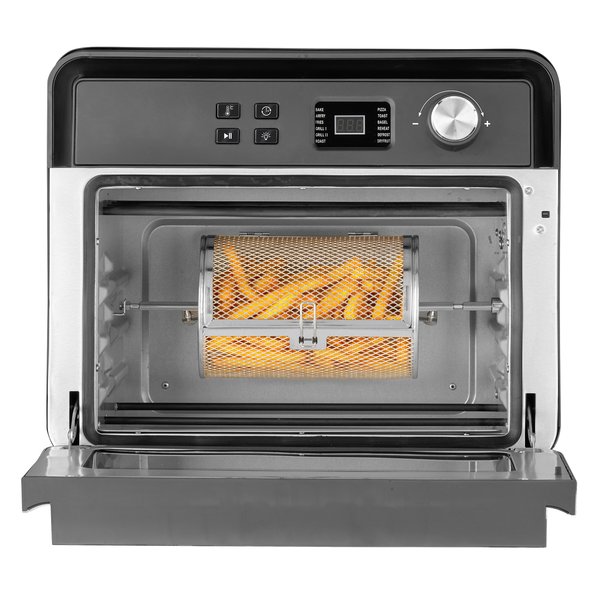Dette er en gylden mulighet for PC-spillere til å sikre seg gode spill til en lav pris. Vi har satt sammen en liste over toppspill med gode anmeldelser og rabatter som er verdt å slå til på. Enten du er interessert i "trippel-A" spill eller indie-titler, har vi noe for enhver smak. Finn de beste Steam-tilbudene på spill med opptil 90% rabatt og ha en fantastisk spillsommer!
Innholdsfortegnelse
Steam, Valves spillnettbutikk, er kjent for å ha store salg hvor spilltitler kan få opptil 90 prosent rabatt. Dette er en gylden mulighet for PC-spillere til å sikre seg gode spill til en lav pris. Men med hundrevis av spill på salg, kan det være vanskelig å skille de gode tilbudene fra de dårlige.
Vi har satt sammen en liste over toppspill med gode anmeldelser og rabatter som er verdt å slå til på. Enten du er interessert i "trippel-A" spill eller indie-titler, har vi noe for enhver smak. Vi anbefaler også å bruke SteamDB-verktøyet for å finne spill med høy brukerscore og stor rabatt.

Populære spill med gode anmeldelser
Her er noen av de mest populære spillene på salg som har fått gode anmeldelser:
- Fallout
- Bioshock
- Devil May Cry
- Tomb Raider
- Hitman
- Assassins Creed
Disse spillene tilbyr en spennende spillopplevelse og er nå tilgjengelige til sterkt reduserte priser.

Samlepakker og spillutvidelser
Ikke bare kan du kjøpe enkeltspill til redusert pris, men det er også mulig å kjøpe samlepakker med flere spill fra samme utvikler. Dette gir deg enda større rabatter og gir deg muligheten til å utforske flere spill i samme serie. Eksempler på samlepakker inkluderer Fallout, Bioshock, Devil May Cry, Tomb Raider, Hitman og Assassins Creed-serien.
Se også
Andre spillbutikker
Steam er ikke den eneste spillbutikken som har store salg. Tidligere har Origin, Uplay og GOG også hatt sommersalg. Det kan være lurt å følge med på disse butikkene også for å finne gode tilbud. Selv om de kanskje ikke har startet salget enda, kan det endre seg i løpet av de kommende dagene og ukene.

Tips før du handler
Før du handler for mange nye spill, er det viktig å ta en gjennomgang av spillene du allerede har kjøpt tidligere. Mange av oss har impulskjøpt spill på salg som vi enda ikke har begynt på. Tenk nøye gjennom om du virkelig trenger flere spill eller om du heller bør gi oppmerksomhet til spillene du allerede har.
Årets sommersalg startet 26. juni og varer til 9. juli. Så det er ikke for sent å sikre seg fantastiske tilbud på Steam.
Uansett om du er en hardcore gamer eller bare liker å spille av og til, ønsker vi deg lykke til med å finne de beste tilbudene og ønsker deg en fantastisk spillsommer!
Kilder: Steam, SteamDB
Hva vil Wiki fortelle oss?
The War of the Currents, also known as the Battle of Currents, was a series of events that occurred in the late 1880s and early 1890s surrounding the introduction of competing electric power transmission systems. The events involved commercial competition, debates on safety, and media propaganda campaigns, with the Edison Electric Light Company promoting direct current (DC) and the Westinghouse Electric Company basing its competing power system on alternating current (AC). This occurred simultaneously with the development and standardization of AC (already in use by several American and European power companies), which posed a strong competition to DC distribution systems. Three aspects converged in this "war": open competition involving major electrical companies and their systems, a general fear among people of lethal electric shock from AC voltage, and events related to the introduction of the electric chair.
The introduction of large-scale outdoor lighting systems using arc lamps gained momentum in the late 1870s, with some systems using high-voltage AC. In 1882, Thomas Edison introduced a DC distribution system for indoor use in businesses and homes as an alternative to oil and gas-powered lighting. In 1886, George Westinghouse constructed an AC distribution system that utilized transformers to step up the voltage for long-distance transmission and step it down again at the point of use. This was a more efficient and cost-effective system that competed in the market for which Edison's system was designed. Several other companies based on AC also developed power systems, rapidly spreading the use of AC. Edison's company proclaimed in 1888 that AC was dangerous and inferior to their patented DC system.
The spring of 1888 saw a media frenzy after a series of deaths caused by pole-mounted high-voltage AC lines in New York City and other locations. This was attributed to the greed of local power companies. In June of the same year, electrical engineer Harold P. Brown became known in New York as an opponent of AC use. He claimed that AC-based power companies put the public at risk with high voltages and haphazard installations. Brown's campaign received immediate support from Edison and his company. Edison attempted to assist Brown in the public debate by electrocuting animals with AC to prove its greater danger compared to DC. Documents from this time have revealed a conspiracy between Edison's company and Brown to try to limit the use of AC: Edison's company aided Brown in attempting to push through legislation to control and severely limit AC installations. Specifically, this involved restricting the highest voltage that could be allowed, rendering AC systems inefficient. Edison also provided technical assistance to Brown in conducting tests to demonstrate that AC would be the best system to power the new electric chair. In collusion with Brown and the Thomson-Houston Electric Company, they ensured that the first electric chair was powered by an AC generator from Westinghouse.
The late 1880s were a period of industrial consolidation, and by 1890, over a dozen electrical companies had merged into just three entities: Edison (now Edison General Electric), Thomson-Houston, and Westinghouse. In the early 1890s, Thomson-Houston and Westinghouse generated profits that far exceeded those of the DC-based Edison Company. During this period, Thomas Edison withdrew from his business based on electric distribution. The company he had originally founded transitioned to AC as its preferred technology. Edison Electric's institutional resistance to AC came to an end in 1892 when they merged with their biggest competitor, Thomson-Houston. This merger gave Thomson-Houston's management control over a new company, General Electric. The merger of Edison Company (along with significant lighting patents) and Thomson-Houston (with its patents for AC systems) resulted in a company that controlled three-quarters of the American electrical industry. Westinghouse won the bid to supply electric power to the World's Columbian Exposition in 1893. Later that year, the company secured its first contract with Niagara Falls. The company's leadership in the electrical industry quickly diminished as subsequent contracts were divided with General Electric.
As a result of the transition to AC, the price of electric power decreased, but DC-based power systems continued to exist throughout much of the 20th century.
The War of the Currents emerged as a result of the development of two competing lighting systems: arc lamps powered by AC and incandescent lamps powered by DC. Both systems displaced gas lighting systems, with arc lamps taking over outdoor and street lighting, while incandescent lamps replaced gas for commercial and residential lighting.
Arc lamps were the first type of electric lighting used extensively. These lamps had been known since the early 19th century, but it was not until the late 1870s that they were installed in cities as part of large systems powered by central power stations. These lighting installations provided extremely bright light and were capable of illuminating entire streets, factory areas, or large rooms. The systems required high voltages (over 3000 volts) and often functioned best with AC.
AC had been under development in Europe for some time, with contributions from inventors such as Sebastian Ziani de Ferranti, Lucien Gaulard, John Dixon Gibbs, Galileo Ferraris, and the Hungarian machinery factory Ganz. By using high voltages, a central power station could supply electricity to a large area, with a radius of up to 10 km. The transmission capacity of a wire is limited, among other things, by its length, cross-section, and voltage. Therefore, high voltage is an advantage for transmitting large amounts of power over long distances.
In 1880, several large installations with arc lamps were established in various American cities, including a power station supplied by the Brush Electric Company in December 1880. This power station provided a power line of about 3 km in length with a voltage of 3500 volts on Broadway in New York for a demonstration of arc lamps. The disadvantages of arc lamps included the need for frequent maintenance, as well as their humming, flickering, and fire hazard. Therefore, they were only suitable for outdoor lighting. Due to the high voltages used, they were also dangerous to work with.
In 1878, Thomas Edison saw a market for a system that could bring electric light directly into subscribers' factories or homes, a niche market not served by arc lighting systems. In 1882, the investor-owned Edison Illuminating Company was established in New York. Edison developed his power system to compete with already established gas utilities for lighting. The system was based on supplying 110-volt DC, which is a relatively low voltage, to power the incandescent lamp he had invented. Edison's DC systems were sold to several cities across the United States, making them the standard where Edison controlled all technical development and held all the important patents. DC worked well for incandescent lamps and could be used directly with batteries. This provided valuable load balancing and backup power in case of interruptions in the supply from the power station. Another advantage was that DC generators could be easily connected in parallel. As a result, the number of generators could be varied by switching them on and off, allowing for more efficient operation by adjusting the number of machines in operation as the load fluctuated. This also improved reliability. Edison had also invented a watt-hour meter to bill customers for their exact energy consumption.
DC also worked excellently for electric motors, an advantage that DC would maintain throughout the 1880s. Despite many experiments and development, neither Nikola Tesla nor others were able to develop a functional AC motor until the end of the current war. The breakthrough with AC motors only occurred at the beginning of the 1890s.
The major drawback of Edison's DC system was that it used the same low voltage all the way from the power station to the consumer, resulting in a relatively short transmission range. In order to keep the size of the expensive copper conductors down, power stations had to be located in the middle of population centers and could only supply subscribers up to 1 km from the facility.
The development of the transformer from 1880 onwards provided AC with an additional advantage by allowing the electrical energy to be up-transformed to much higher voltages for transmission. Transformers were then used to step down the voltage at the customers' end for their appliances' use. The use of induction coils to transmit electricity between electrical circuits had existed for 40 years, with Pavel Yablochkov as the first user of these in lighting installations in 1876. Lucien Gaulard and John Dixon Gibbs succeeded in 1882 in creating a transformer, but their simple construction had limited efficiency. In 1884, the Hungarian engineer Károly Zipernowsky (1853-1942) built the first transformer with an iron core, which significantly increased efficiency. This design was further developed by the companies Ganz and Ferranti and led to efficient transformers becoming widely available by the end of the decade.












